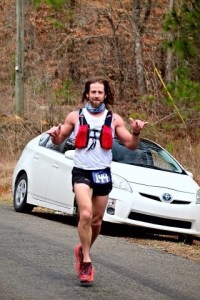4 Tips for Distance Runners
By Dr. Matthew DeOrio, Foot & Ankle Surgeon with TOC – The Orthopaedic Center
Over the last three years, I’ve learned a lot about running. Much of what I have learned has come through trial and error.
There are plenty of books about running; I probably should have read some of them before I started taking on longer distances. There are some things that I have done well and other things where I completely missed the boat.
Here are some things to consider if you plan on spending any significant time running. In no particular order:
- Prepare your body for running, even before you start running. Consider spending weeks, even months working on core strength training, and remember to include simple running exercises. There are plenty of exercises for running that you can find on the Internet. Doing this will prepare your body for running rather than shocking your body when you first start running and putting yourself at risk for a potential injury.
- Don’t underestimate the importance of hydration. Your body can only absorb 300 mL to 800 mL of water per hour during exercise. Drinking small amounts of water more often should lead to more effective hydration. If you are exercising less than an hour, plain water is probably acceptable. However, if you’re exercising for more than an hour, an electrolyte/carbohydrate-loaded drink will offer additional benefits.
With extreme exercise, not only will fluid be lost, but you will also lose electrolytes. Early on, despite drinking plenty of fluid, I still had problems with muscular cramping/spasms. This was due to sodium loss, magnesium loss, and overconsumption of water without replenishing electrolytes. This is called exercise-induced hyponatremia.
With more intense exercise, the type of fluid used for hydration becomes more important. Your body will use glycogen stores during the first hour, but after that first hour, the glycogen stores become depleted. Your body will begin to rely more on fat for energy. During extremes of exercise, consider replenishing your glycogen stores with 30 to 60 g of carbohydrates every hour. This will help prevent your body from “crashing” with a loss of energy.
- Selecting the proper shoewear, depending on your foot type, will also lead to more efficient and enjoyable running. There is a lot more to shoes rather than just style and color. Make sure you are fitted with an appropriate shoe based on your running style, foot type, and surface that you are running on, such as road or trail.
If you tend to wear the shoe asymmetrically, it is important to replace your shoes more frequently. This is particularly important for runners who put more pressure along their foot’s lateral (outside) border, who have a cavus foot/high arched foot. Once a shoe begins to wear on the outside of the sole, this will accentuate the pressures on the outside of the foot and lead to tendon issues over time. The goal of proper shoewear is to provide the right balance for your foot. The three different foot types are feet that pronate, are neutral, or supinate. Making sure you are fitted with an appropriate shoe type will help to minimize injuries.
- Finally, make sure you warm up before you begin running. The older we get, the more time that it takes to get warmed up. Stretching is particularly important after a run or after a warm-up. The warm-up improves the mind-body connection and can help to minimize the potential for injuries.
Some people are born to run and have biomechanics that require less fine-tuning. Unfortunately, this does not apply to everyone; however, we can all become better runners through practice and education. Becoming a better runner can have many different interpretations. Set a goal, such as distance, speed, or fitness. Joining a running group makes training more enjoyable and can exponentially increase your knowledge. Get out and run and have fun!
Dr. Matthew DeOrio


“Getting better! Working towards my goal of an Ironman!”
I completed my fifth ultramarathon on 2/27/21 – “The Race to the Top of Alabama” Mount Cheaha 50k, in Talladega National Forest. 8th place out of 212 finishers, in 5:46:34.


Race to the Cave Cathedral Cavern Half Marathon, Woodville, AL on 3/21/21. 16th place out of 603 finishers, in 1:38:36.
Not only am I healthier, but it has altered my perspective on distance running and associated injuries. These experiences have allowed me to identify with this subgroup of athlete patients and the injuries resulting from training.

